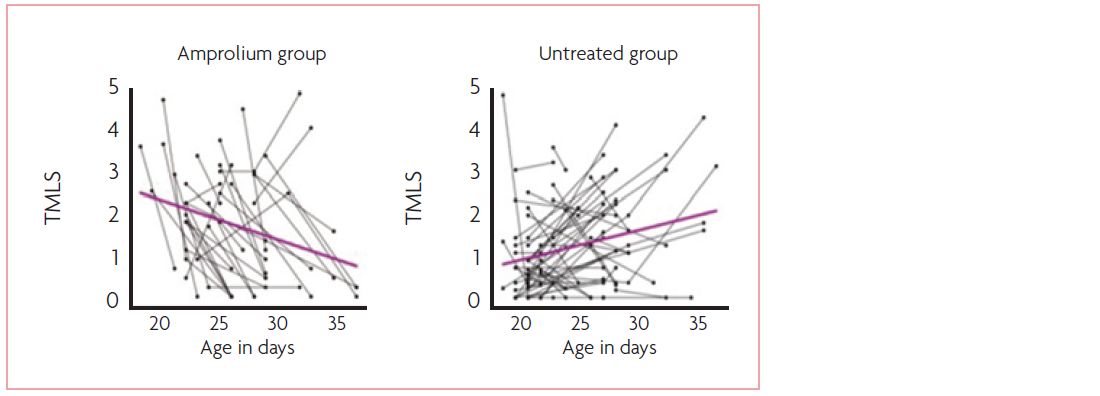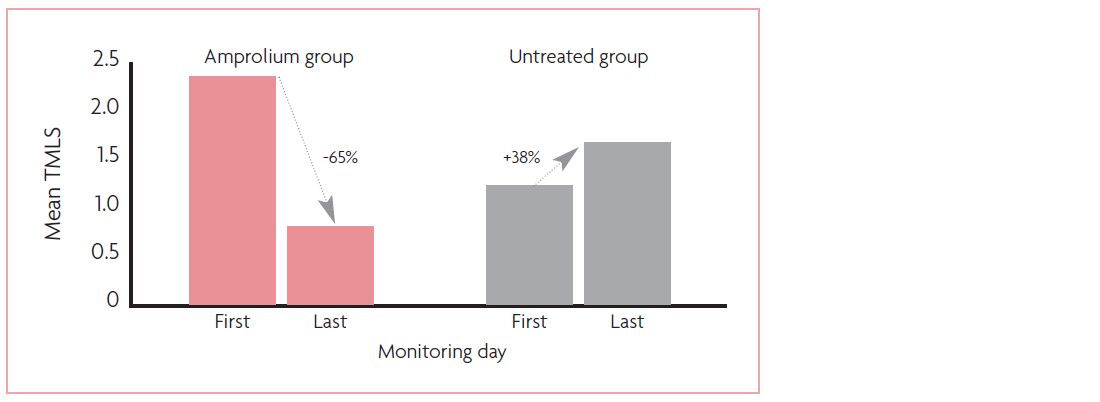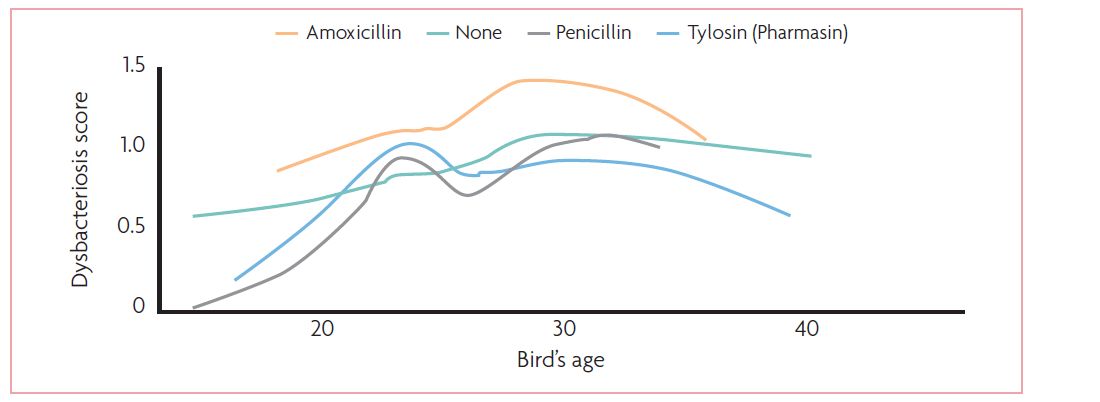Hence the effect in these 'realistic' field conditions, known as the effectiveness of the product, can be largely deviating from those seen in controlled trials. To be able to evaluate this effectiveness, monitoring the field situation with sufficient detail is of vital importance.
To this regard, Aviapp®, the Huvepharma health platform, can be a useful tool to address such questions. In this article, data collected using Aviapp® is used to explore the effectiveness towards coccidiosis lesion score reduction under amprolium (Amproline®) treatment and the reduction of dysbacteriosis with different antimicrobial treatments.
The data used for the analysis originates from commercial Belgian broiler farms, monitored between January 2019 and February 2020. The available information included lesion scorings for coccidiosis according to the system of Johnson and Reid (1970), dysbacteriosis scorings collected via Aviapp® as well as information about the medication use and its indications.
In total, information was available from 1,103 flocks. This dataset was used as a starting point to address the questions of interest.
Reduction of coccidiosis scores by amprolium (Amproline®)
Out of the 1,103 flocks, 83 flocks were scored twice. For the treatment group (53), an extra condition was that first scoring was done on the first day of the treatment. The field effectiveness of the amprolium (Amproline®) treatment was evaluated by comparing the evolution of the total mean lesion scoring (TMLS) of the treated flocks (83) and the untreated groups (30).
The majority of the amprolium treated flocks showed a decrease in TMLS. In contrast, flocks which were not treated by any compound showed an increase in TMLS during the same age window. The evolution of TMLS by age for amprolium treated flocks and for untreated flocks is shown in Figure 1. Each flock is represented by a black line connecting the monitoring moments. The purple line indicates the average trend in the TMLS evolution.

When including amprolium in the diet, the mean TMLS between the first and last monitoring moments was reduced by 65%, whereas a TMLS increase of 38% was seen in the untreated group (Figure 2). These data confirm the field efficacy of amprolium (Amproline®) as a treatment for coccidiosis.

Dysbacteriosis evolution in flocks receiving different antibiotics

In total, 381 flocks were monitored, of which 190 flocks received a treatment for enteritis/dysbacteriosis (Table 1). For each of those flocks, at lease one report with a dysbacteriosis score was available in Aviapp®. The evolution of the dysbacteriosis score in the different groups (illustrated in Figure 3) showed that flocks treated with penicillin or tylosin (Pharmasin®) had a steeper increase in dysbacteriosis score compared to the flocks which received no treatment and those who received amoxicillin.

Treatment is often initiated based on sudden clinical signs of dysbacteriosis (like faeces consistency/feed: water ratio), which explains the more pronounced increase for the tylosin and penicillin group. The untreated groups seemed to already have a higher dysbacteriosis score at a younger age, and no sudden increase. So probably the more subtle changes in the feed: water ratio for example, were less marked and consequently not treated.
Amoxicillin seems to be used in earlier severe cases of dysbacteriosis. However, the rapid increasing scores is more stabilised with penicillin and tylosin (Pharmasin®) when compared to amoxicillin. In addition, dysbacteriosis scores in general were higher in the amoxicillin treated groups. All patterns show a first peak around 22-24 days of age, with a secondary peak appearing around 30 days of age.
The secondary peaks are more pronounced for the amoxicillin and penicillin treated flocks compared to the non-treated and tylosin (Pharmasin®) treated groups. This suggests that relapse of enteritis / dysbacteriosis is treated with tylosin (Pharmasin®).
An objective evaluation of field data is essential to evaluate or compare the effectiveness of certain products under field circumstances. This is complementary to the (more subjective) field experience of the veterinary practitioners. Gathering such field data is not always easy. Aviapp®, the Huvepharma health platform, can help in gathering this information.
Aviapp® is the global health platform from Huvepharm, used to structurally improve the health status, welfare and performance of broilers. It is intuitive and easy-to-use and allows you to collect important data from your broiler flocks including:
- treatment data
- health monitoring - with a choice of 49 reference parameters
- house management - including litter score and climate
- technical data - such as water and feed intake, mortality
- anticoccidial programs and others such as feed.
Aviapp® gives you the possibility to compare this data in a structured and standardised way over time and share information with other users on the platform at a regional, national or global level. It can help you make the critical decisions needed to optimise performance. Find out more by visiting our website.
This article appeared in International Poultry Production magazine, volume 28, no 8.



